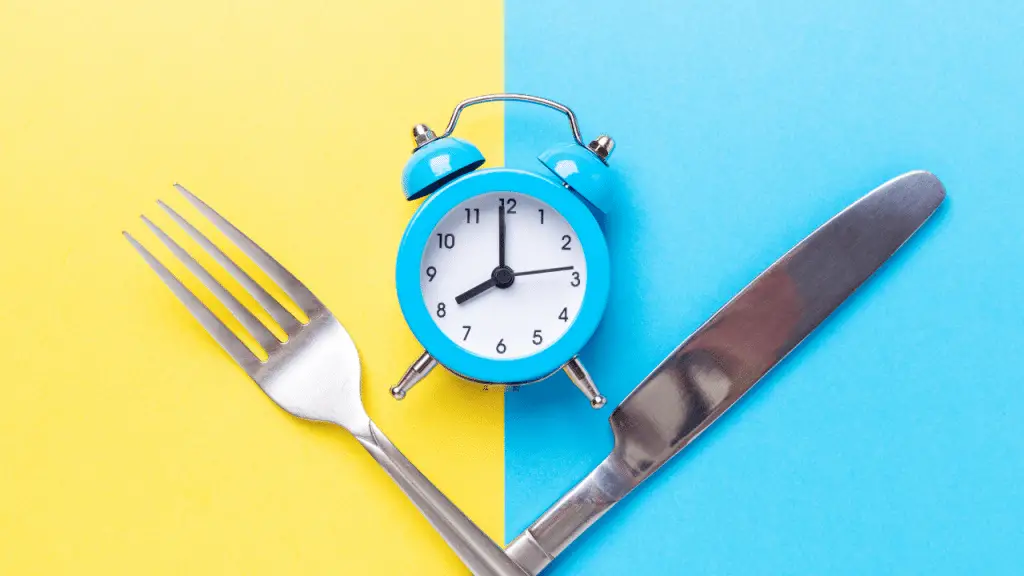As you know, I am a firm believer in the benefits of intermittent fasting. For me, it was the ultimate cure! It gave me tons of energy and helped me lose the weight I had been struggling to lose for years. However, nothing is perfect and nothing works for everyone. When I experimented with intermittent fasting 10 years ago, I found that I was getting intermittent fasting headaches, so I stopped. If I had known what I know now back then, I am sure I would have persevered. I am hoping this post will help you avoid wasting all that time as I did.
Side Effects of Intermittent Fasting
I wrote a whole post about it (14 Proven Health Benefits of Intermittent Fasting (Wait Til You See Number 7). Unfortunately, intermittent fasting may also be accompanied by some unpleasant side effects like crankiness, lethargy, constipation, and headaches. Today, we will focus on intermittent fasting headaches.

Intermittent Fasting Headache
When you don’t eat for over 16 hours, you may experience what is called a “fasting headache.” It should go away within 72 hours of ingesting food according to the International Classification of Headache Disorders. The level of pain of a fasting headache is usually mild to moderate and occurs around the forehead. It’s more like a tension headache than a migraine, although people susceptible to migraines may find that fasting triggers a migraine for them. The length of your fast increases the likelihood of experiencing a headache.
Causes of Intermittent Fasting Headaches
Your intermittent fasting headache may be caused by various factors:
- Low blood sugar: According to some experts, changes in blood glucose may affect pain receptors in your brain. Interesting to note: hypoglycemia-induced headaches tend to have a pulsating quality to them.
- Caffeine: It could be caffeine withdrawal if you are going without coffee while intermittent fasting. could also be drinking coffee on an empty stomach (I think that was it for me).
- Dehydration: Some people forget to drink water when they are fasting.
- Stress: As you adjust to this new lifestyle, you may feel stressed out, which can cause headaches. Moreover, fasting itself is a stress to your body.

Intermittent Fasting Headache After Eating
As I was researching for this article, I discovered that some people get a headache from eating after a fast. This is usually caused by the type of food ingested, like consuming too many carbs. Another way the types of food you consume could affect you is if you have food intolerances. If you notice a pattern of headaches after eating, you should take note of which foods you ate when that happens. Consider going on an elimination diet.
How to Stop Intermittent Fasting Headaches
Now we need solutions, right? What’s the point of talking about your intermittent fasting headache if we don’t give you some ways to manage it. When I found that intermittent fasting triggered headaches for me 10 years ago, I decided to give up. I figured intermittent fasting “wasn’t’ for me.” Now, I am not implying that intermittent fasting is wonderful for everyone. Since we are all unique, some people need to stay away from intermittent fasting (even if it’s just temporarily). However, sometimes, you just need to learn about some tweaking that can make a world of difference.

Salt to Relieve Intermittent Fasting Headache
A common symptom of low sodium is headaches. You may also feel lightheaded, dizzy, nauseous, or notice muscle cramps.
One common intermittent fasting headache remedy is salt. Drink a glass of water with 1/2 teaspoon of sea salt or Himalayan salt in it. As a side note: I used to always recommend Himalayan salt and was told that it often contains heavy metals, so we should favor sea salt instead. I haven’t researched it, I am pretty sure everything on earth is contaminated with heavy metals at this point. I still thought I should mention it, so you can make your own informed decision.

How Much Sodium Do You Need?
When you start fasting, your kidneys tend to excrete more sodium, possibly because of the lack of carbohydrates. A generally accepted safe limit for sodium consumption is 2,300 mg a day. Some have argued that 3,500 mg is closer to what your bodies really need. During fasting, a negative sodium balance usually starts on the 2nd day and accumulates over the course of your fast. Considering all this, 2-3 grams of sodium a day would be a good starting point (1/2 teaspoon, like I mentioned). If you exercise, you should even consider consuming 3-4 grams.
Caffeine to Relieve Headaches
Another option is to play around with your caffeine intake. If you are experiencing caffeine detox symptoms, you could reduce your caffeine consumption gradually. If you are still drinking coffee and you think it may be causing your headaches, reducing your intake may also help. There is an excellent supplement that I like to recommend to prevent or treat intermittent fasting headaches. It’s called Super Lytes and it contains Himalayan Pink Salt and Organic Rooibos Extract. Rooibos tea will provide some caffeine on top of its anti-inflammatory and antioxidant properties.

Forms of Intermittent Fasting That May Help Reduce Headaches
Trying a different form of intermittent fasting is something I wish I had known about 10 years ago. Intermittent fasting is not just about skipping breakfast, there are other options. I loved having breakfast, so intermittent fasting seemed very unsustainable! Now, I don’t miss breakfasts at all, I think we often underestimate what we can get used to. However, if you are a breakfast person and you get intermittent fasting headaches to top it all off, forget about skipping breakfast!
Eat-Stop-Eat Method
The Eat-Stop-Eat method is the number one intermittent fasting method I would recommend for those who struggle with maintaining a daily intermittent fasting method like the 16:8 and the 20:4 methods. The eat-stop-eat method involves fasting for 24 hours two times a week or even three times a week. You start fasting after dinner one night and fast until dinner time the next night. You will eat one hour later than you had your dinner the night before to get that 24-hour fasting window.
The benefit of the eat-stop-eat method is that you don’t have to do it every day but the fast is long enough to start helping your body switch from glucose metabolism to ketone metabolism. Since we talked about how intermittent fasting headaches may be caused by blood sugar changes, I am sure you can see how that would help.
In Summary
You will handle your intermittent fasting headache differently depending on what you suspect might be the cause. You may need to experiment a little to find what works. Sometimes, it’s just a matter of waiting it out, but usually, you can implement a few changes that will help. Make sure you drink plenty of water, take some sea salt or an electrolyte supplement, switch from fasting daily to fasting two or three times a week, and see what happens!




